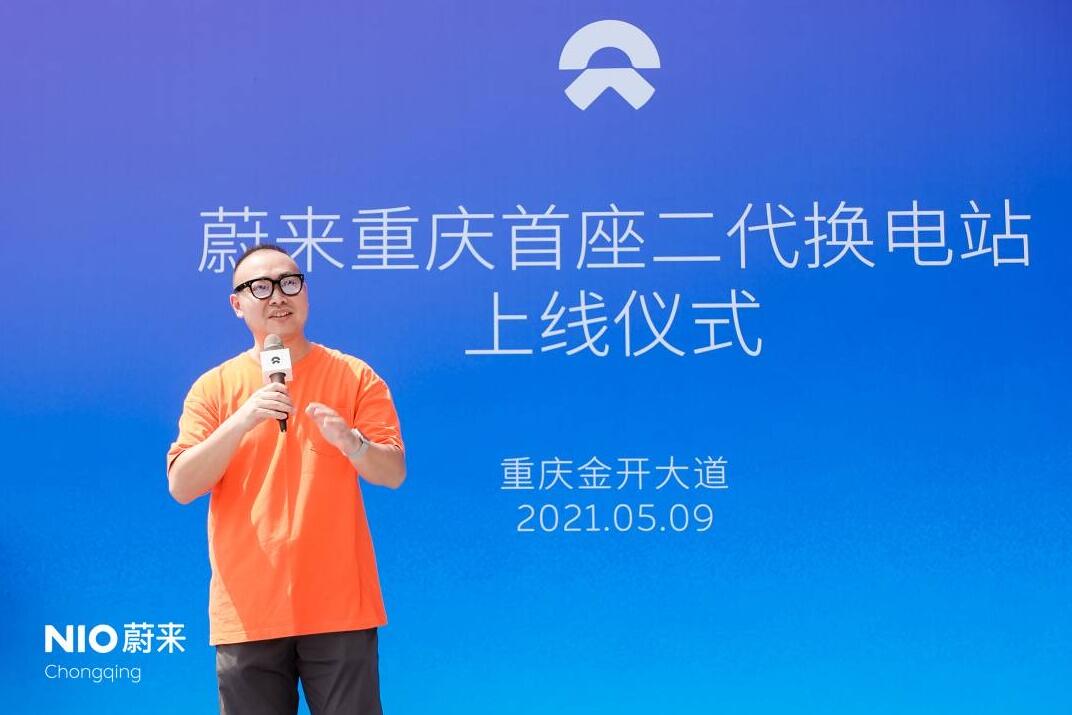As China's national policy supports the battery swap model, local governments are getting in on the action.
The southwestern Chinese city of Chongqing will provide subsidies of up to 500,000 yuan ($78,000) for each battery swap station built and put into operation there, according to a recent document released by the city's finance bureau.
The document specifies the city's subsidy rate for new energy vehicles in 2021, which is a 10 percent reduction from the 2020 rate, but for the first time, it proposes a subsidy for battery swap stations.
Eligible to apply for subsidies are the builders of battery swap stations in public services that are registered locally and have independent legal representation, but their annual cumulative number of battery swap stations built and put into service should reach at least 15.
In China's electric vehicle market, vehicles that support battery swap are already taking shape, with Nio being the only vehicle manufacturer currently delivering such models on a large scale to general consumers.
Other car companies, including BAIC, have similar models, but they are all low-end models for the cab market.
We are not sure if Nio is eligible for this subsidy. The company built its first second-generation battery swap station in the city on May 9, bringing the total to four.
All of Nio's new battery swap stations are currently second-generation products, and the individual cost is reportedly RMB 1.5 million, half of the first-generation product.
If Nio is able to take advantage of this subsidy from Chongqing, its battery swap station construction costs in the city will be significantly reduced.
(Nio's first second-generation battery swap station in Chongqing. Source: Nio)
(Source: Nio)
Battery swap-enabled models allow owners to enjoy the convenience of the latest technology as battery technology advances, and also provide an additional replenishment option over the average model, making such models more attractive.
China's policy also supports the battery swap model. Last April, China set a requirement that subsidies for the new energy vehicle industry must be priced under RMB 300,000, but battery swap-enabled models are exempt from this requirement, allowing Nio to continue to enjoy the subsidies it has enjoyed in the past.
Earlier this month, media reports said SAIC would soon launch a "battery bank" to support the body-battery separation model, with a unified battery pack to be introduced by the end of this year or early next year.
SAIC's unified battery pack covers 11 models and can support lithium iron phosphate, ternary lithium batteries, high nickel batteries, and even solid-state battery cells.
This will make SAIC the second Chinese car company after Nio to set up a "battery bank" to support the body and battery separation model.
GAC is also studying the feasibility of building battery swap stations, and its management team has already visited a battery swap station in Guangzhou owned by battery swap service provider Aulton.
Previously, the lack of uniform standards was seen as the most important obstacle to the development of battery swap models for electric vehicles in China, but this obstacle is now expected to be alleviated.
China's State Administration for Market Regulation (SAMR) earlier this month approved the National Standard for Battery Swap Safety Requirements for Electric Vehicles (GB/T 40032-2021), making it the industry's first mandatory standard regulating battery swap model development.
The standard, drafted by companies including Nio, Beijing Electric Vehicle Co Ltd, and Geely, will come into effect on November 1 this year, specifying safety requirements, test methods and inspection rules for battery swappable electric vehicles.


